1. CXP Optical Module
Application: Exclusively for short-distance multimode links.
Full Name: 120 Gb/s eXtended-capability Form Factor Pluggable Module.
Description: A hot-pluggable, high-density parallel optical module standard with a data rate of 120G (12×10G). It has largely been replaced by QSFP28.
2. CFP Optical Module
Full Name: Centum Form-factor Pluggable.
Description: A high-speed, hot-pluggable optical module standard supporting both data communication and telecom transmission. It comes in various versions with different data rates and transmission distances. Due to its large size, it has gradually been replaced by CFP2 and QSFP28.
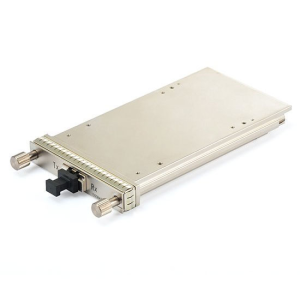
3. CFP2 Optical Module
Data Rate: 100G/200G/400G.
Application: Commonly used in metro networks and telecom backbone networks. It offers better size and power efficiency compared to CFP.

4. CFP4 Optical Module
Description: A further miniaturized version of CFP2, designed for high-density data center applications.
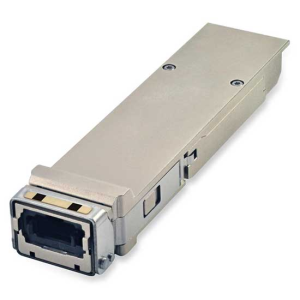
CFP vs CFP2 vs CFP4 Comparison Table:
| Form Factor | CFP | CFP2 | CFP4 |
| Release Year | 2009 (earliest) | 2012 (improved version of CFP) | 2014 (further miniaturized) |
| Dimensions (W×L) | 82 mm × 144 mm | 41.5 mm × 144 mm | 21.5 mm × 102 mm |
| Size Ratio | 1× (baseline) | ~1/2 (width halved) | ~1/4 (width halved again) |
| Power Consumption | High (typ. 24W @100G) | Medium (typ. 12W @100G) | Low (typ. 6W @100G) |
| Supported Rates | 40G/100G | 100G/200G/400G | 100G/200G/400G |
| Interface Type | LC duplex or MPO (multimode) | LC/MPO/SN (pluggable) | LC/MPO (higher density) |
| Typical Applications | Early 100G backbone, long-haul transmission | Metro networks, data center core layer | High-density 100G/400G access layer |
| Hot-Pluggable? | Yes | Yes | Yes |
| Market Status | Mostly obsolete | Mainstream (especially in telecom) | Emerging (high-density data center needs) |
5. SFP Optical Module
Full Name: Small Form-factor Pluggable
Description: A compact, hot-pluggable optical module known for its small size, low power consumption, and high transmission rates.
Key Features: Supports hot-swappable functionality for easy installation and maintenance without network interruption.
Typical Applications: Gigabit Ethernet, enterprise switches, routers, and Fiber-to-the-Home (GPON) systems.
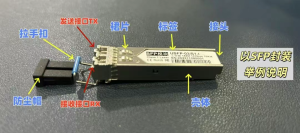
6. SFP+ Optical Module
Full Name: Small Form-factor Pluggable Plus
Description: An enhanced version of SFP with higher data rates. While similar in size and appearance to SFP modules, it’s more sensitive to Electromagnetic Interference (EMI) due to increased speeds.
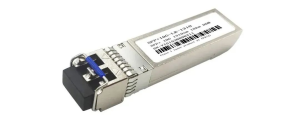
7. SFP28 Optical Module
Full Name: Small Form-factor Pluggable 28
Description: Maintains the same form factor as SFP+ but supports 25G rates (backward compatible with 10G SFP+).

8. SFP56 Optical Module
Full Name: Small Form-factor Pluggable 56
Description: An advanced SFP variant using PAM4 modulation technology. While physically compatible with SFP28 (25G) and SFP+ (10G) LC duplex interfaces, it requires higher-rate device support.
Key Applications: High-speed data centers, AI/ML clusters, and 5G midhaul/backhaul networks demanding high bandwidth and low latency.
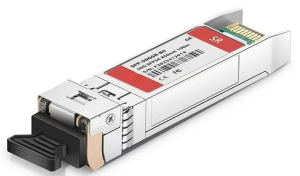
Note: All modules in the SFP family maintain mechanical compatibility while progressively increasing performance through improved electrical interfaces and modulation schemes.
SFP Series Optical Modules Comparison
| Form Factor | SFP | SFP+ | SFP28 | SFP56 |
| Release Year | 2001 (earliest) | 2006 (SFP upgrade) | 2014 (25G standard) | 2018 (56G standard) |
| Data Rate | 1G/2.5G | 10G | 25G | 50G/56G |
| Protocol Standard | IEEE 802.3 | IEEE 802.3ae | IEEE 802.3by | IEEE 802.3cd |
| Typical Power Consumption | 0.8W-1.5W | 1W-1.5W | 1.5W-2W | 2W-3W |
| Interface Type | LC duplex (SM/MM) | LC duplex (SM/MM) | LC duplex (SM/MM) | LC duplex (SM/MM) |
| Transmission Distance | Short-reach (550m) to long-haul (80km) | Short-reach (300m) to long-haul (80km) | Short-reach (100m) to mid-reach (40km) | Short-reach (100m) to mid-reach (10km) |
| Typical Applications | Gigabit Ethernet, enterprise switches | 10G server access, 5G fronthaul | 25G data centers, 5G midhaul | 50G/56G high-speed access, AI clusters |
| Backward Compatibility | Not compatible | Compatible with SFP physical interface (rate downgrade) | Compatible with SFP+ physical interface (rate downgrade) | Compatible with SFP28 physical interface (requires negotiation) |
| Market Position | Legacy market (older equipment) | Still mainstream for 10G | Replacing SFP+ (25G scenarios) | Replacing SFP28 (high-density scenarios) |
SFP Series Rate Evolution:
SFP → SFP+: 1G/2.5G → 10G (10× increase)
SFP+ → SFP28: 10G → 25G (2.5× increase, enabled by PAM4 modulation)
SFP28 → SFP56: 25G → 50G/56G (2× increase, NRZ → PAM4 transition)
Key Technical Upgrades:
PAM4 Adoption: SFP28/SFP56 utilize PAM4 modulation (doubling spectral efficiency compared to NRZ), enabling higher single-lane rates.
Physical Compatibility:
Uniform Interface: All generations maintain LC duplex fiber interfaces and can be inserted into the same ports (with rate negotiation and protocol support requirements).
Rate Downgrading: When an SFP56 module is inserted into an SFP28 port, it may operate at 25G (subject to device compatibility).
| Optical Module | Current Status | Replacement Trend | Driving Forces |
| SFP | Legacy market (older equipment) | Being replaced by SFP+ (for 1G scenarios) | Similar cost with higher speeds |
| SFP+ | 10G mainstream (>70% market share) | Being replaced by SFP28 (25G demand growth) | 25G server adoption in data centers |
| SFP28 | 25G mainstream (5G/data centers) | Being replaced by SFP56 (high-density 50G needs) | AI/ML clusters requiring higher bandwidth |
| SFP56 | Emerging market (volume since 2020+) | May be partially replaced by QSFP56-DD in future | Potential marginalization as 400G ecosystem matures |
SFP Series Summary
Upgrade Logic:
Speed demand-driven evolution (1G→10G→25G→50G) while maintaining interface compatibility
Future Trend:
SFP56 may become the final 50G short-reach solution, with higher speeds transitioning to QSFP-DD/OSFP (e.g., 400G)
QSFP Series Modules
9. QSFP+ Optical Module
Full Name: Quad Small Form-factor Pluggable
Description: A compact, hot-pluggable 40Gbps module compliant with SFF-8436 and QSMP MSA
Compatibility: Fits all QSFP+ interfaces (and some QSFP28 ports)

10. QSFP28 Optical Module
Full Name: Quad Small Form-factor Pluggable 28
Description: Four-channel hot-swappable module with 28Gbps per lane

11. QSFP-DD Optical Module
Full Name: Quad Small Form-factor Pluggable-Double Density
Description: High-density 8-channel module for space-constrained high-bandwidth applications
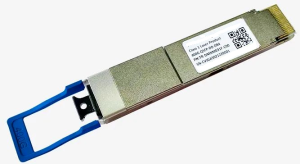
Optical Module Naming Convention
While manufacturers have unique naming systems, most follow this pattern (example: SFP-GE-LH40-SM1310):

SFP: Form factor
GE: 1G Ethernet speed
LH40: 40km long-haul transmissio
SM1310: Single-mode fiber with 1310nm wavelength
| Code | Field Name | Description | Common Value Examples |
| A | Form Factor | Physical package type | SFP, SFP+, SFP28, QSFP+, QSFP28, QSFP56, QSFP-DD, CFP, CFP2, CFP4, CXP |
| B | Data Rate | Supported transmission speed | FE(100M), GE(1G), 10GE, 25GE, 40GE, 100GE, 200GE, 400GE, 800GE |
| C | Distance Type | Code for transmission range | Refer to “Transmission Distance Code Table” below |
| D | Transmission Distance | Maximum reach in km | 0.55, 2, 10, 20, 40, 80, 120 |
| E | Fiber Mode | Single-mode or multi-mode | SM (Single-mode), MM (Multi-mode) |
| F | Central Wavelength | Optical signal wavelength in nm | 850, 1310, 1550, CWDM4(1271-1331), DWDM(1528-1563) |
Transmission Distance Type Code Table (Corresponds to Field C)
| Speed Range | Short-Range Code | Medium-Range Code | Long-Range Code |
| 1G/GE | SX | LX | LH/EX/ZX/EZX |
| 10G/10GE | SR | LR | ER/ZR |
| 25G/25GE | SR | LR | ER |
| 40G/40GE | SR4 | – | LR4/ER4 |
| 100G/100GE | SR4 | – | LR4/ER4/DR/FR/LR4/CWDM4/DWDM |
Safe Module Handling Procedures
Preparation: Power down system before replacement
ESD Protection: Wear anti-static gear; avoid touching circuits
Fiber Handling: Hold connectors (not fiber); maintain >5cm bend radius
Contamination Control:Always use dust caps. Clean with anhydrous alcohol swabs if contaminated
Mechanical Safety: Insert/remove horizontally. Avoid impact to module rear
Compatibility: Verify vendor-specific requirements (e.g., Cisco authorization codes)
Thermal Safety: Allow cooling (modules may reach 70°C during operation)
Port Verification: Confirm correct slot (avoid electrical ports)
Post-Installation Check: Verify status LEDs. Inspect fiber connectors for damage
